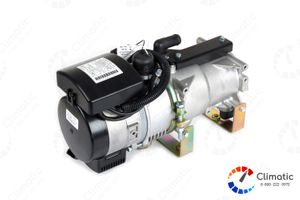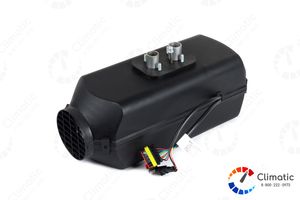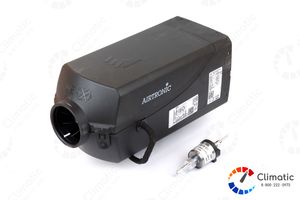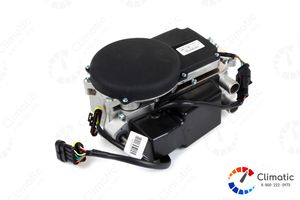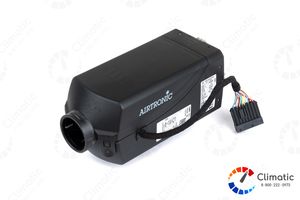Operating tips - Autonomous air heaters Air Top EVO 3900 / 5500
< ol> The heater must be installed in accordance with the Installation Instructions and entered in the technical passport of the car. If the installation has been certified by an authorized Webasto service station, the acceptance protocol must be permanently stored in the vehicle.
Failure to follow the installation instructions will void the warranty on the part of Webasto. The same applies to repairs carried out by non-specialists or using non-original spare parts. In addition, warranty claims can only be made if there is no evidence of non-compliance with this manual by the heater owner.
The year of first commissioning of the heater must be marked on the nameplate by erasing the remaining years.
Webasto air heaters are not approved for heating containers in which dangerous goods are transported. When installing heaters on vehicles carrying dangerous goods, the requirements of ADR 002 and ADR 003 (Technical Directives for the Transport of Dangerous Goods by Road) must be complied with.
At the gas station, as well as where combustible vapors and dust can form (near fuel, coal or grain depots, etc.), the heater must be turned off. In this case, the shutdown must not be carried out by turning off the main switch of the car or the battery switch of the car, otherwise during prolonged operation damage to the heater and malfunctions are not excluded. The heater must not be used for heating flammable and explosive gases and other similar substances, and also to operate where there is a danger of explosion.
The flow of heated air from the heater must not pass through flammable materials due to the risk of smoke and fire; such materials should also not be near the heater. In no case should the heater be operated without a grill at the outlet of the heated air. If the heating system is equipped with baffles, in any of their positions the heated air outlet must be open, at least partially, to prevent blocking of the air flow.
The heater must not be switched on (including from the programmable timer or Telestart remote control) in enclosed spaces (for example, in garages) if they do not have an exhaust hood.
The heater must not be cleaned with water, other liquids, or compressed air, etc.
The heater must be started for at least 10 minutes every 4 weeks.
In case of unusual noise during heater operation, strong smoke in the exhaust for a long time, smell of fuel and unusual odors in the heated air, the heater must be blocked by removing the fuse and checked at an authorized Webasto service station .
Between the heater and the plane on which it is mounted, an insulating gasket must be installed, otherwise harmful exhaust gases can penetrate the car. When dismantling the heater, this gasket must always be replaced.
The service life of the air heater heat exchanger is 10 years, after which it should be replaced at the Webasto authorized service station with a new Webasto production facility. When replacing a heat exchanger, it is imperative to replace the temperature limiter installed on it. If the exhaust pipes are laid through the rooms in which people are located, they also need to be replaced after 10 years with the new Webasto production.
The heater runs on fuel used in the vehicle in which it is installed, provided that it matches the type of heater indicated on the nameplate (leaded or unleaded gasoline for gasoline heaters - type B, diesel fuel for diesel - type D) .
All fuel lines must be sealed and not damaged. If damaged fuel lines or leaks in their connections are detected, the heater must be blocked by removing the fuse and the malfunctions at the Webasto service station should be eliminated. In no case should plastic fuel lines (mecanilic hoses) be fitted to exhaust pipes due to the risk of fire; if necessary, protect them with thermal insulation.
The temperature around the heater should not exceed 85 C.
It is forbidden to step on the heater and place objects on it. It is forbidden to cover the heater with clothes, pieces of cloth, etc., and also place them in front of its air intake or outlet of heated air. It is necessary to ensure that the air intake and the outlet of the heated air are free from dirt and foreign objects - otherwise, overheating may occur and the heating limiter will trip. If this happens, it is necessary to check the air ducts and remove all objects that impede the free flow of air, or repair the air ducts on the Webasto service. Only then can the heating limiter be unlocked by moving it to its original position. If overheating is repeated , you need to carefully check the heater on the Webasto service. Depending on the configuration, the heater is controlled from a switch or a timer (see below), and in vehicles for the transport of dangerous goods - only from a switch (from a timer - only "manually", by a direct start button). In vehicles for the transport of dangerous goods, the heater automatically shuts off (with subsequent purging) when the car engine is turned off and when the loading and unloading device for the transported goods is turned on. To restart the heater after such a shutdown, it must first be turned off with a switch or timer.


